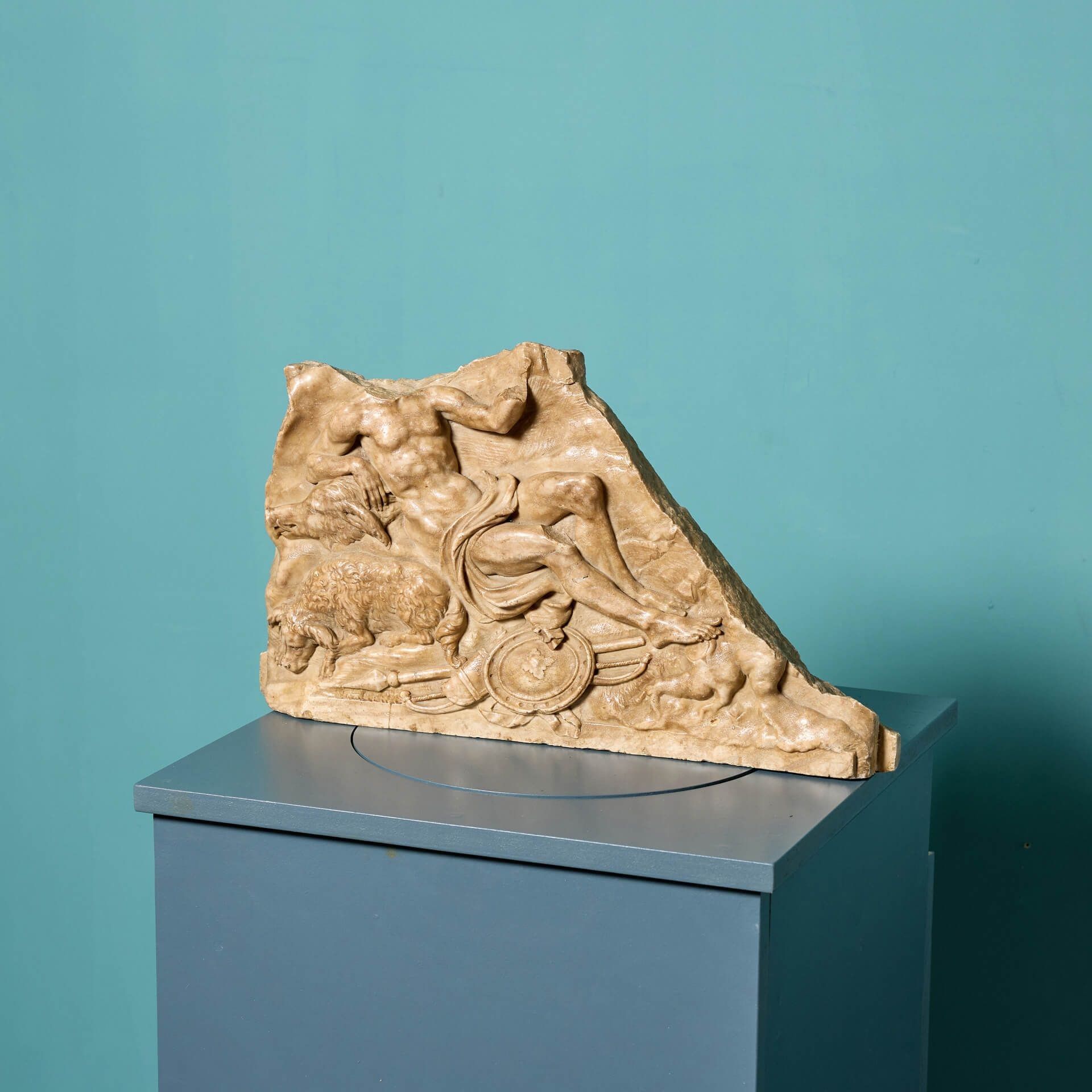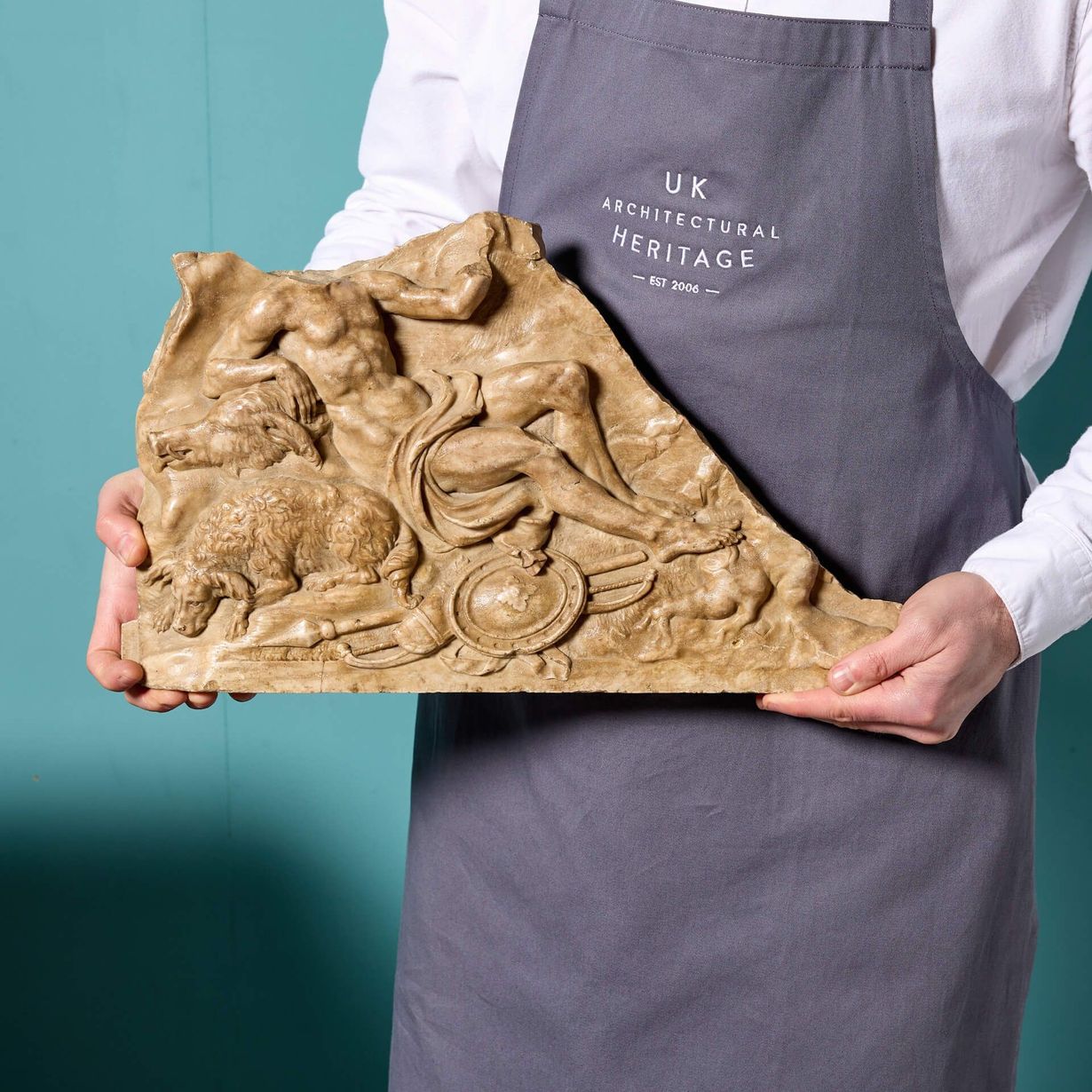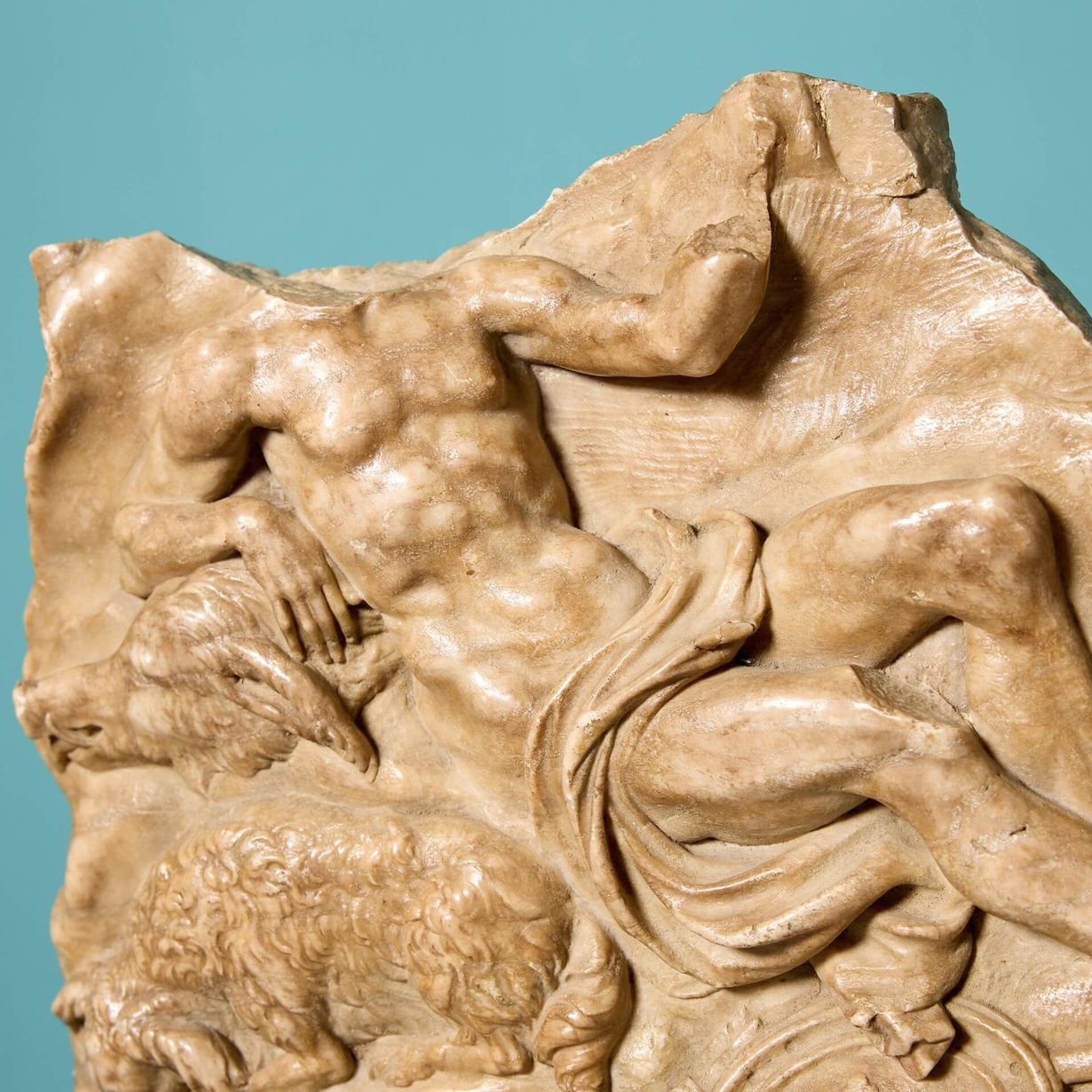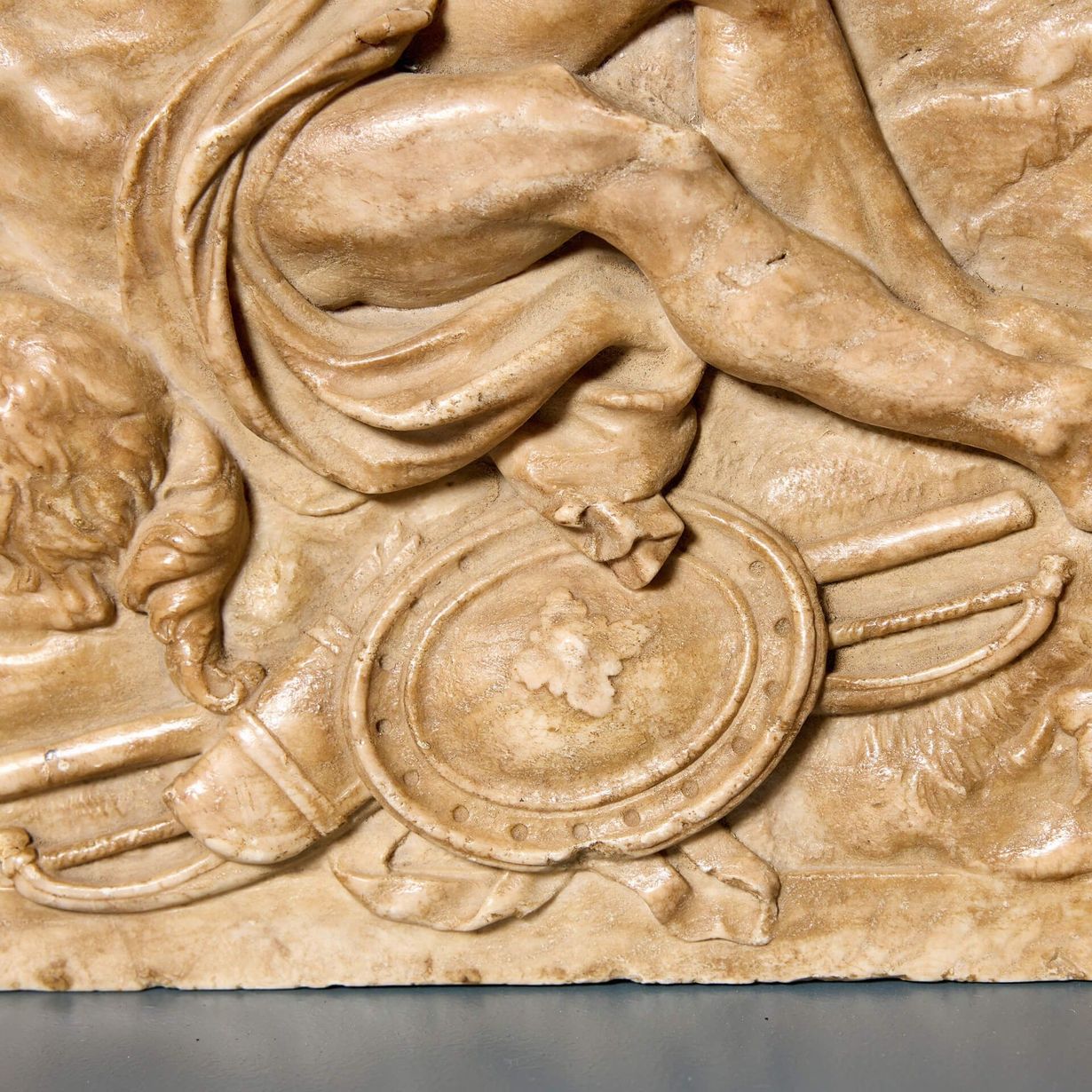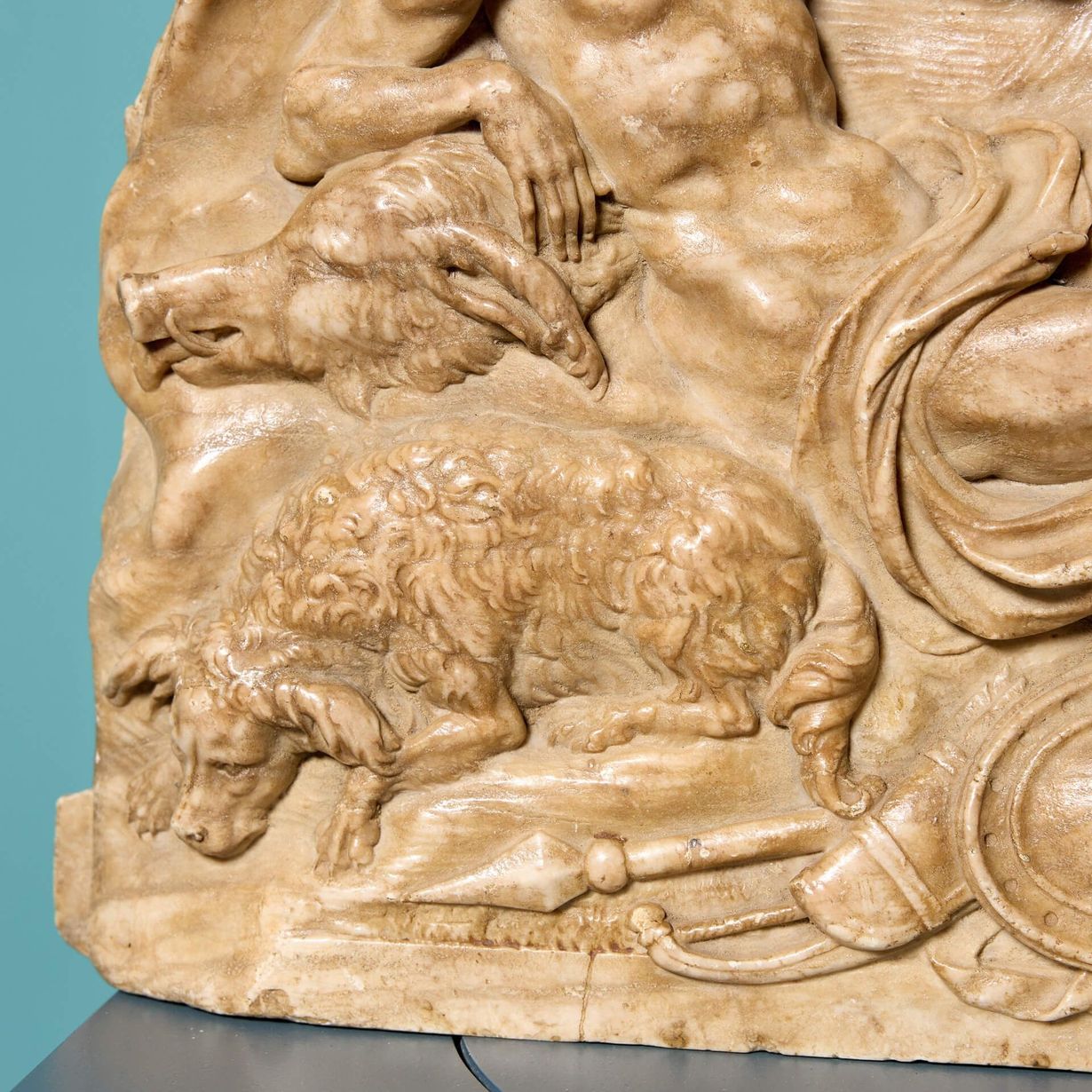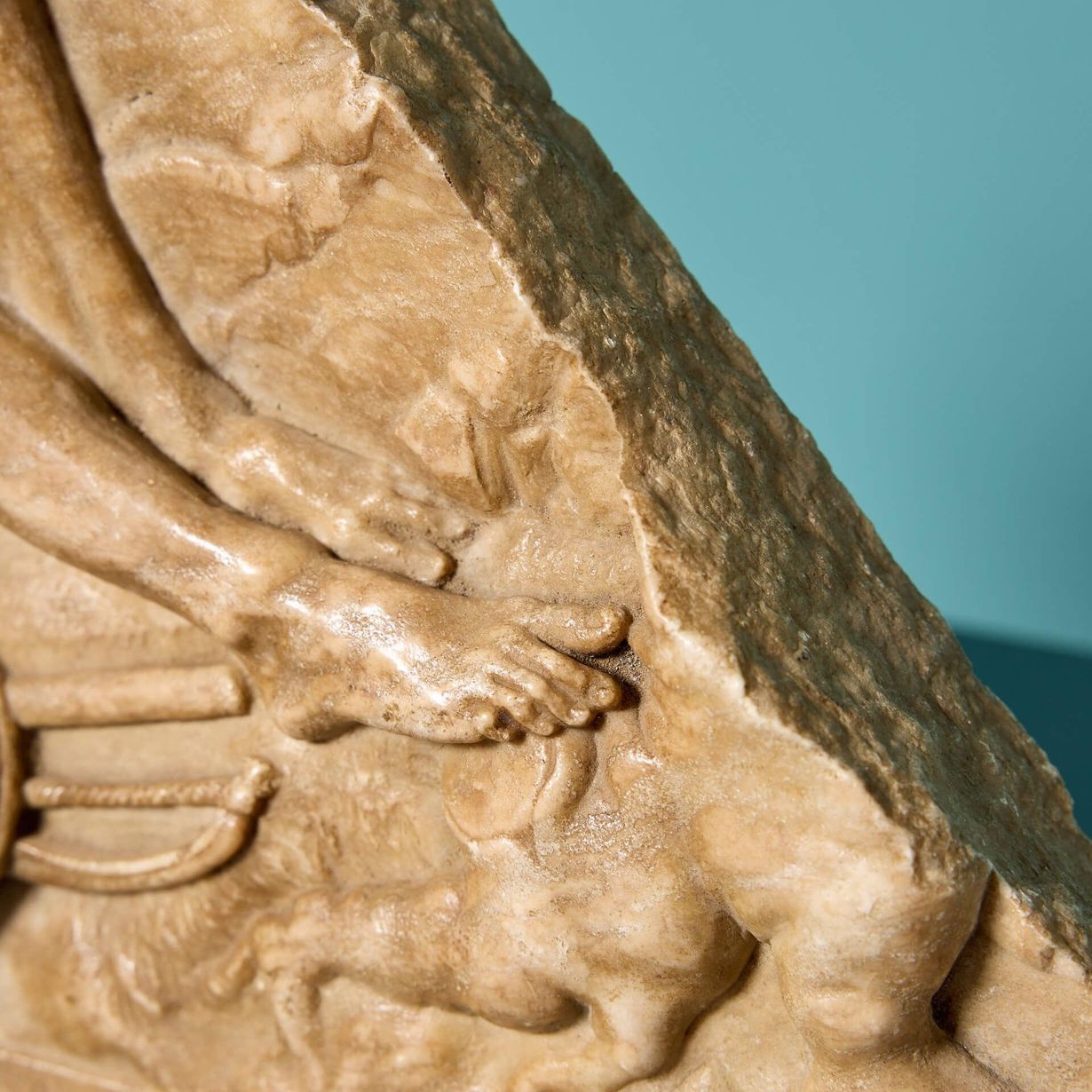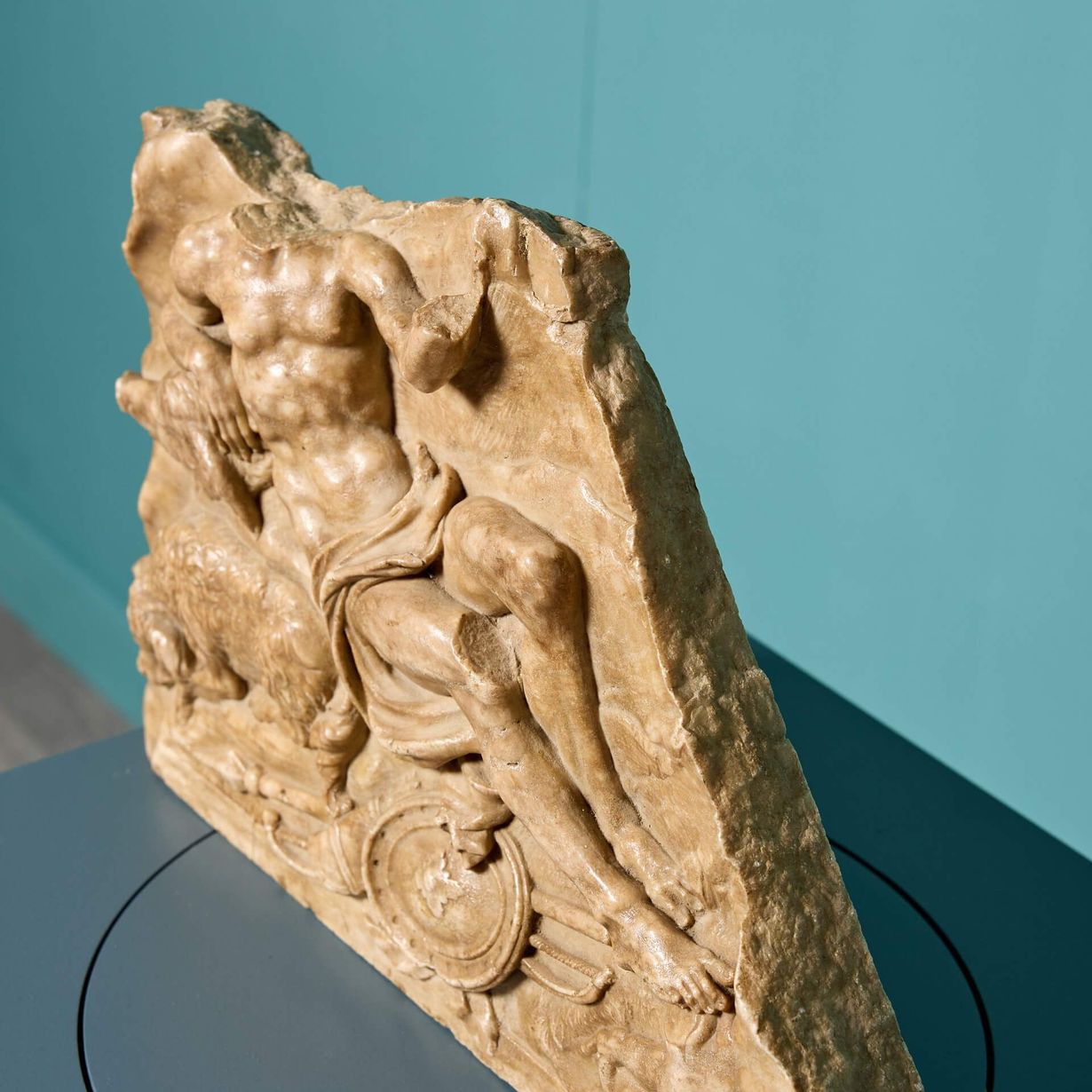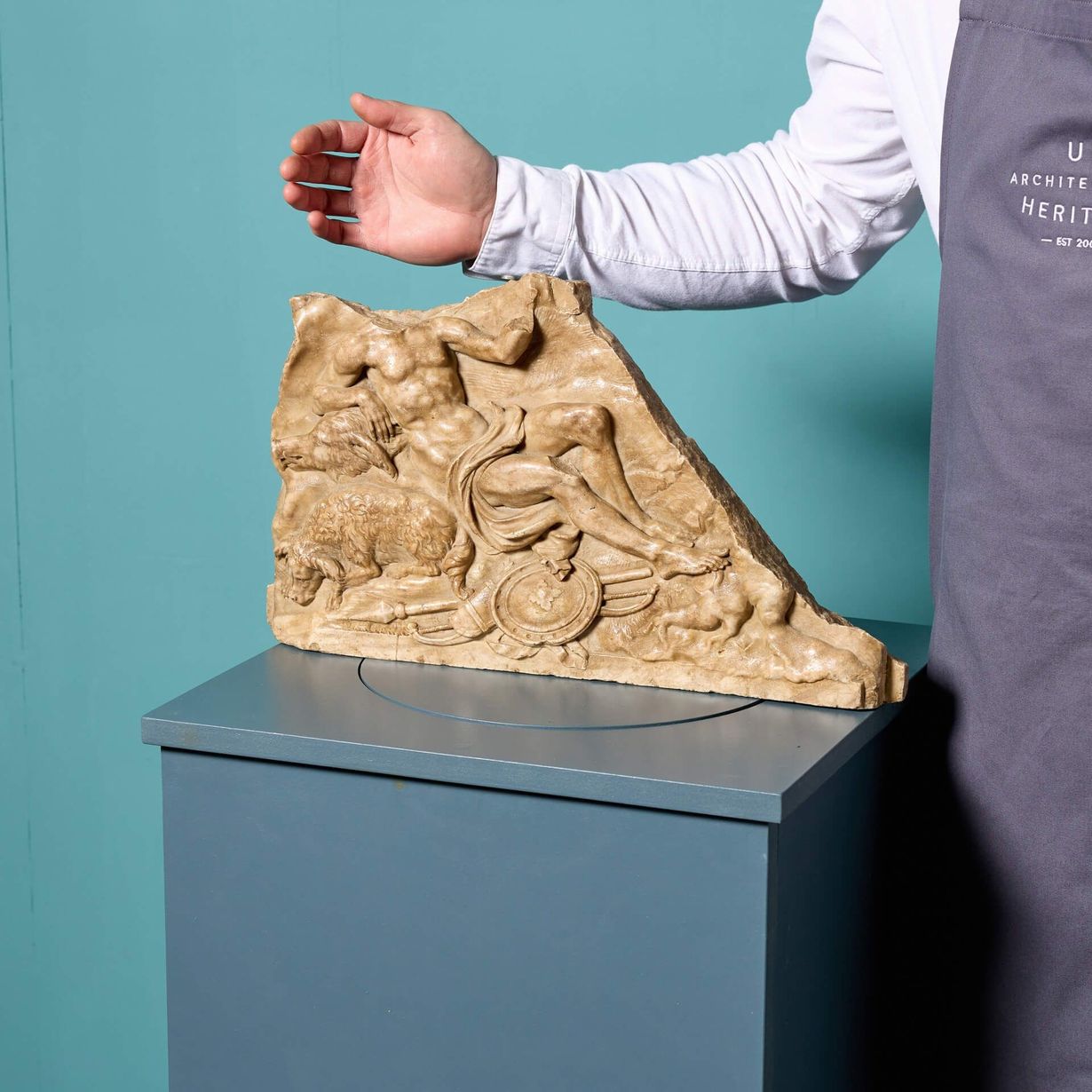About this piece
back to topA large antique Italian marble fragment depicting a section of the Calydonian Boar Hunt. Likely once forming part of a great carved frieze, this marble fragment is thought to be 600 years old, dating from as early as the 15th century. It is exceptionally detailed, the intricate carving still as clear and distinctive as it would’ve been centuries ago.
The fragment depicts the Greek hero Meleager sat in a reclining position with arm resting on the head of the Calydonian boar. A dog sits beside him while a spear, bow, quiver of arrows and a shield sit at his feet. Though his head is lost, Meleager exudes strength and status with his athletic torso bare and flaunting posture.
The Calydonian Boar Hunt
The story of the Calydonian Boar dates back to Ancient Greece, predating the times of famed poets Hesiod and Homer. Roman poet Ovid (born circa 43 BC) retells the story in Book VIII of the Metamorphoses, his most famous work: an epic poem that chronicles the history of the world through mythological tales.
According to legend, Artemis, Greek goddess of wild animals and the hunt, released a terrifying boar upon King Oeneus of Calydon’s land. In a bid to slay the beast, the King enlisted his son, Meleager, and an assembly of warriors to hunt the boar. After much difficulty, Meleager defeated the boar, presenting its head as a trophy to his beloved, the huntress Atlanta.
A famous painting depicting the Calydonian Boar Hunt dating to circa 1611 – 1612 by Flemish artist Peter Paul Rubens resides in the Getty Museum, California. It depicts the strong warrior Meleager, mostly nude other than swathes of red drapery, thrusting his spear into a huge boar. He is assisted by hounds and warriors, including the huntress Atlanta who wields a bow behind him.
